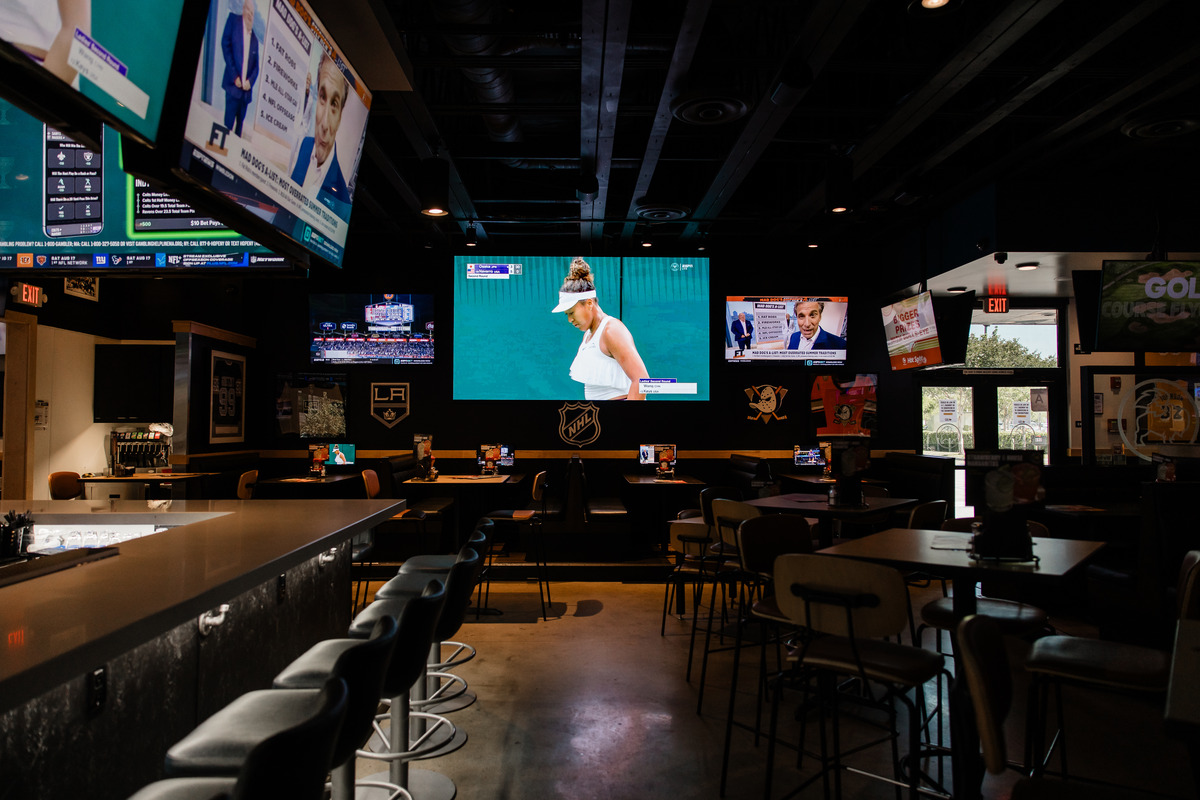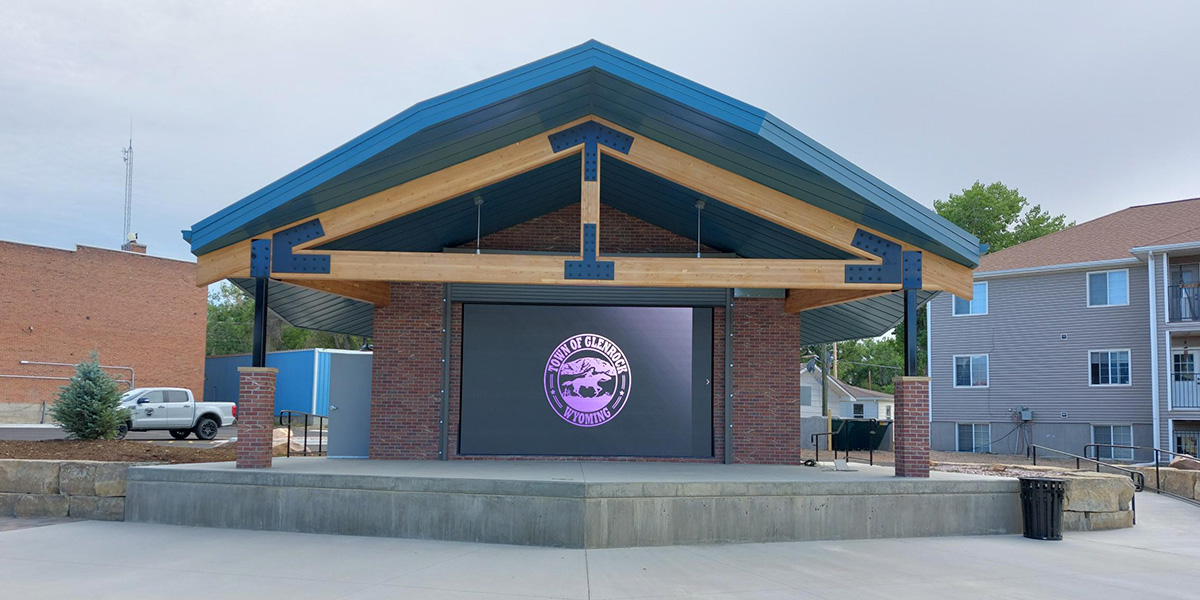
What Are LED Walls and Are They Worth the Hype?
- Nate Verones
- Hits: 929
Are you looking for a solution to entertain your guests, provide easy-to-access information for customers, or incorporate a new and exciting technology into your organization? If any of those desires sound familiar, LED walls can be a perfect solution to address all three — and more! They are a great investment for businesses, churches and event venues to catch customers' eyes and share content in a beautiful, interactive way.
Whether you need a single LED display for a small space or multiple displays to create a large-scale immersive experience, LED video walls deliver display solutions that are scalable, bright, high-performing and flexible. If you're unsure of how LED products can work for you, we're breaking down everything you'll want to know. We think LED walls are worth the hype, but we'll let you decide for yourself!
What Is an LED Wall?
LED stands for light-emitting diode and transforms electrical energy into visible light. An LED screen is a display that consists of many pixels, and each pixel is a combination of red, green and blue LEDs. Billions of color combinations result in the real-life colors we see with the human eye.
An LED wall can be used in various settings, such as educational institutions, churches, theaters, museums and event halls, to share important information or announcements in an interactive way.
How Do LED Walls Work?
Semiconductor metals are used to create LEDs. An electric current is passed through these metals to produce photons — tiny electromagnetic energy particles and, thus, also microscopic particles of light. Photons have no mass or charge, and they represent radio waves, gamma rays and visible light.
Images on LED walls are formed by progressively mixing the light emitted from the individual LED lights in each LED module. This is a very rapid process, so the flickering of LED lights isn't visible to humans. A controller behind the wall is connected to a computer and is often used to control the brightness and color of LED lights. This allows the wall to be adjusted to create desired images and videos without requiring hardware amendments.
Applications and Advancements of LED Walls
Over the years, LED displays have progressed and transformed in terms of contrast, brightness and uniformity, making them ideal for a wide variety of applications:
- Large-screen displays: Large LED walls allow for large-screen displays, which are often used in conference halls and shopping malls.
- Outdoor events: LED walls may also be used in outdoor applications such as stadiums, billboards and stations.
- Research purposes: LED displays can be bent with filmmaking support materials, making them useful for vehicle displays and wearable devices.
COB (Chip-on-Board) technology is an advancement over SMD (Surface Mount Diode) in LED displays. COB enables denser chip placement by mounting chips directly onto the PCB (printed circuit board) without bonding wires. This allows for tightly packed pixels and, as a result, higher resolution while improving durability and heat resistance.
Unlike SMD, which uses soldering and exposes components to environmental damage, COB protects internal structures with stronger adhesive bonding. It also supports smaller component sizes and enhances color accuracy with improved RGB integration.
COB could offer better reliability, image quality and efficiency in the next generation of LED display applications.
What Are the Benefits of LED Walls?
LED walls are a fantastic way to:
1. Engage Your Audiences
When you create content that is designed for your LED wall's specific size, the experience your customers will have can completely transform your organization. LED walls are high-resolution, and the displays are bright, with few limitations that other solutions have when it comes to presenting content. Whatever information you want to share on your LED walls, know that it won't be missed.
2. Create a Dynamic Experience
While walls of all shapes and sizes can be created, many customers choose to go with traditional aspect ratios so that content can easily be created without custom dimensions. The standard aspect ratio is 16:9. When you choose a typical LED wall or screen size, turnaround time reduces drastically, and you won't have to worry about custom pricing for unique designs or dimensions.
3. Share Your Content in New Ways
Video walls can also be used in other ways for businesses, churches and other organizations. Businesses can use video walls to display compelling content in a new and unique way. Forget about old wall-mounted displays used to share information, data dashboards or business results around the office. Your LED wall will allow you to display that information in fresh, inviting new ways. Churches often use LED walls to display music lyrics, teachings, welcome greetings, news and more. Share text, videos, photos and motion graphics.
LED walls can also be used in various locations, from entryways and waiting rooms to naves, offices and board rooms.

What Is a Video Wall?
An LED video wall works by combining numerous LED panels, each containing thousands of diodes. These panels are typically shaped as squares or rectangles and can be arranged to form a wall of any size, shape or dimension. The panels are available in various sizes, with the most common dimensions being 500mm x 500mm or 1,000mm x 500mm.
The LED products also include the hardware and software that enable the screens to work together seamlessly, acquire dynamic and static content, and control when and where content appears on the wall. Whatever content you wish to share, LED walls can enhance your customers' experience and easily share important information.
LED Video Walls vs. Traditional Projectors
Stuck between a video wall and a traditional projector? We understand how this can be a toss-up. While LED products are an investment in your organization, the benefits of their use far outweigh traditional projectors. Here are a few comparisons:
1. LED Video Walls Are Brighter Than Projectors
When comparing LED video walls to traditional projectors, LED video walls quickly distinguish themselves as the superior choice. Video walls tend to be much brighter than projectors and are visible even in daylight or direct sun. Projects often compete with other light sources and can be hard to view if the lights aren't low enough.
2. LED Video Walls Last Longer Than Projectors
Projector bulbs lose brightness over time, and their performance can't compare to that of LED technology. Many lose up to 30% of their original brightness within the first year alone. However, a video wall’s LED construction ensures that you have a crisp, bright and precise image for years without losing brightness or image quality.
3. LED Video Walls Deliver Superior Performance Over Projectors
Projectors use external devices to share content and display the information you want to share. When it comes to sharing multiple content streams with projectors, this can become very challenging without multiple projects or experts who understand their complex operations.
In contrast, video walls have a video controller built into each display and can be quickly learned by anyone interested in understanding their power. Video wall controllers can easily manage multiple streams of content, letting you create dynamic presentations and switch from one content type to another. Projectors simply can't compete with LED walls' flexibility.
4. LED Video Walls Require Less Maintenance Than Projectors
Video walls do require more time and effort to install initially than projectors. However, once installed, they require much less maintenance. For example, the average projector bulb lasts 2,500 hours, while a video wall will last up to 100,000 hours. This means a video wall would last for the equivalent of 40 projector bulbs.
Worth the Hype?
All in all, video walls deliver superior performance, quality, brightness and longevity, and are an excellent investment for any business or organization. Are you ready to present your message in a whole new way? Contact Refresh LED today! Our experts are here to answer your questions, provide you with estimates and more.















